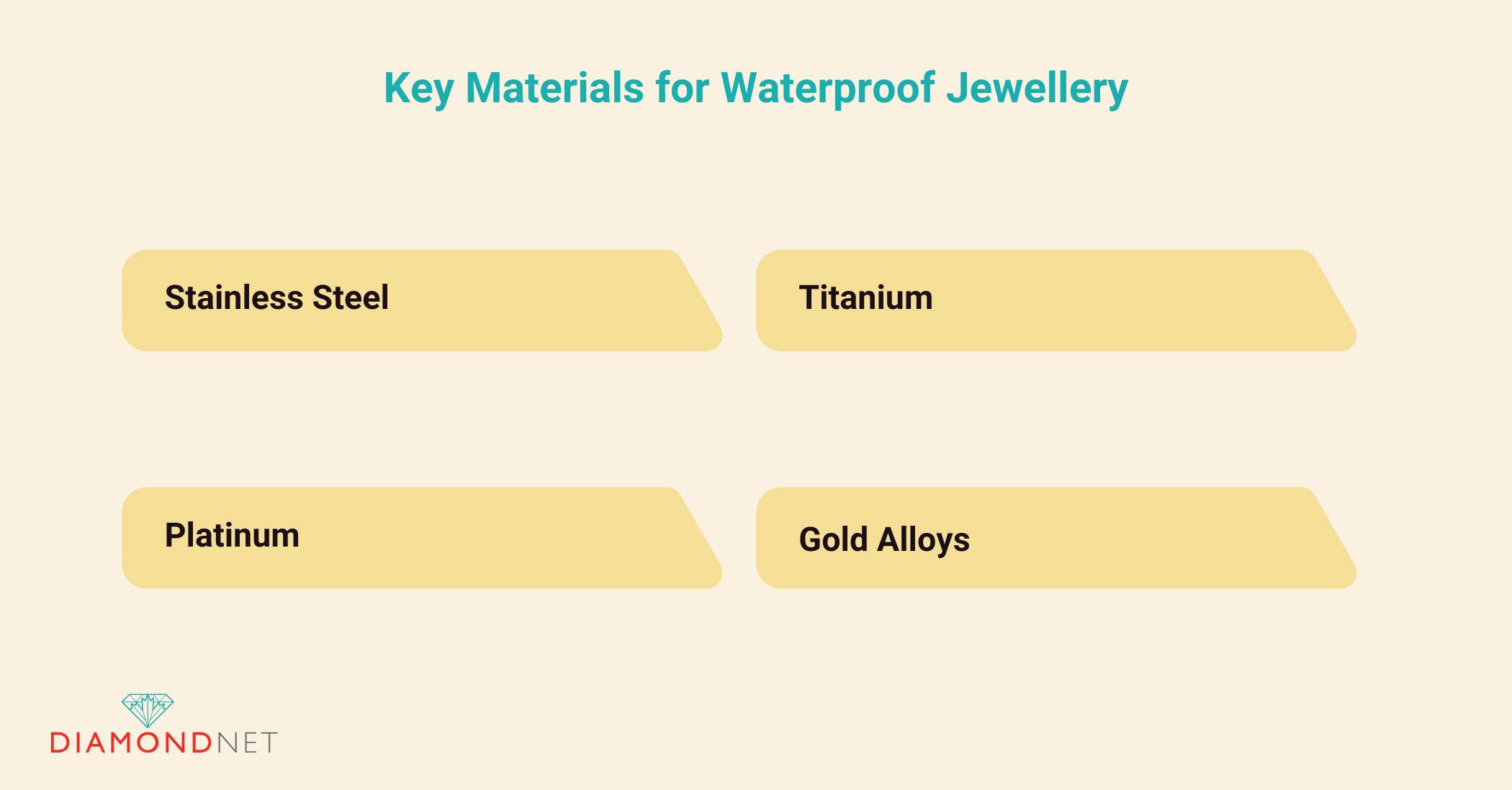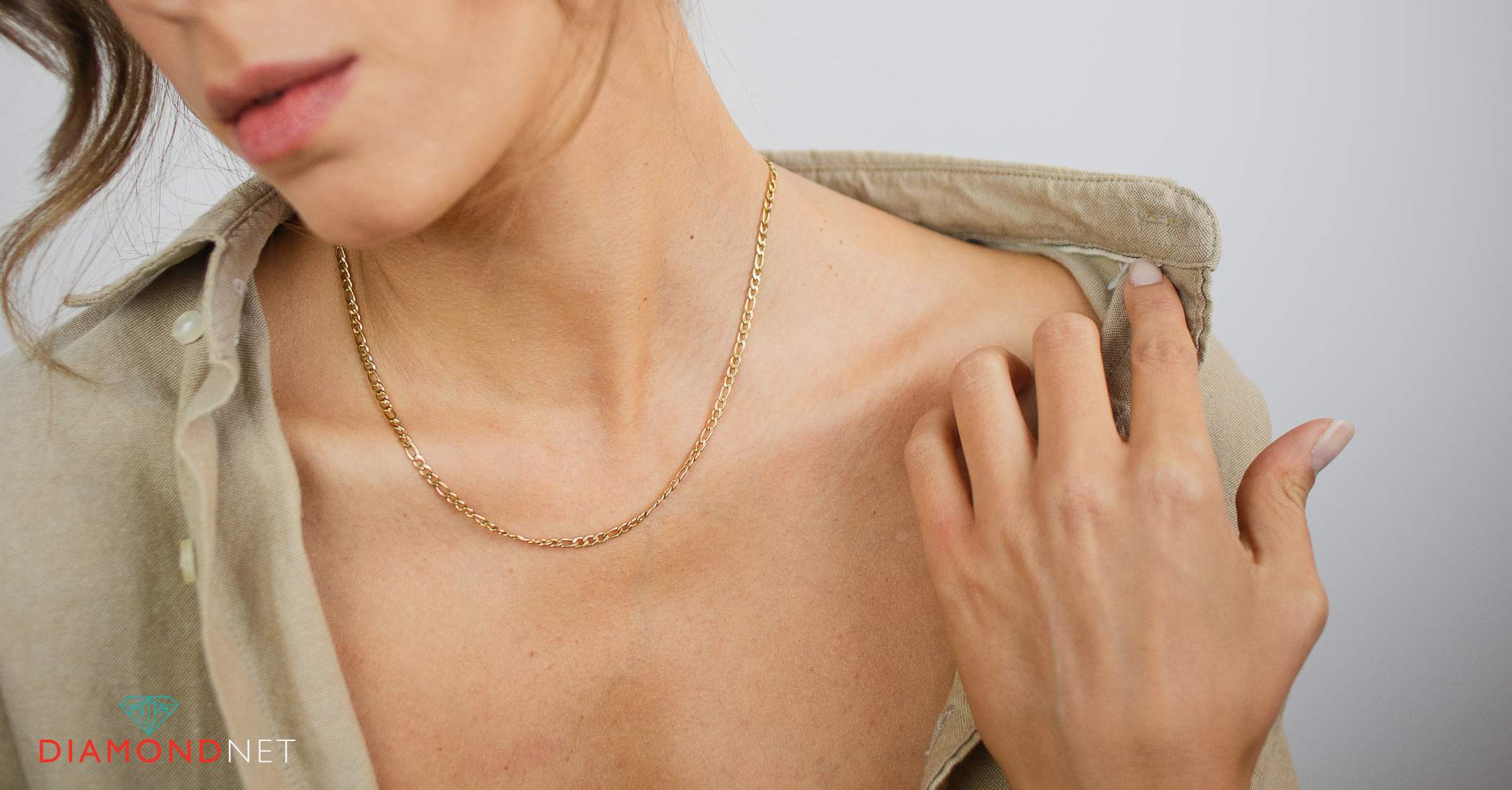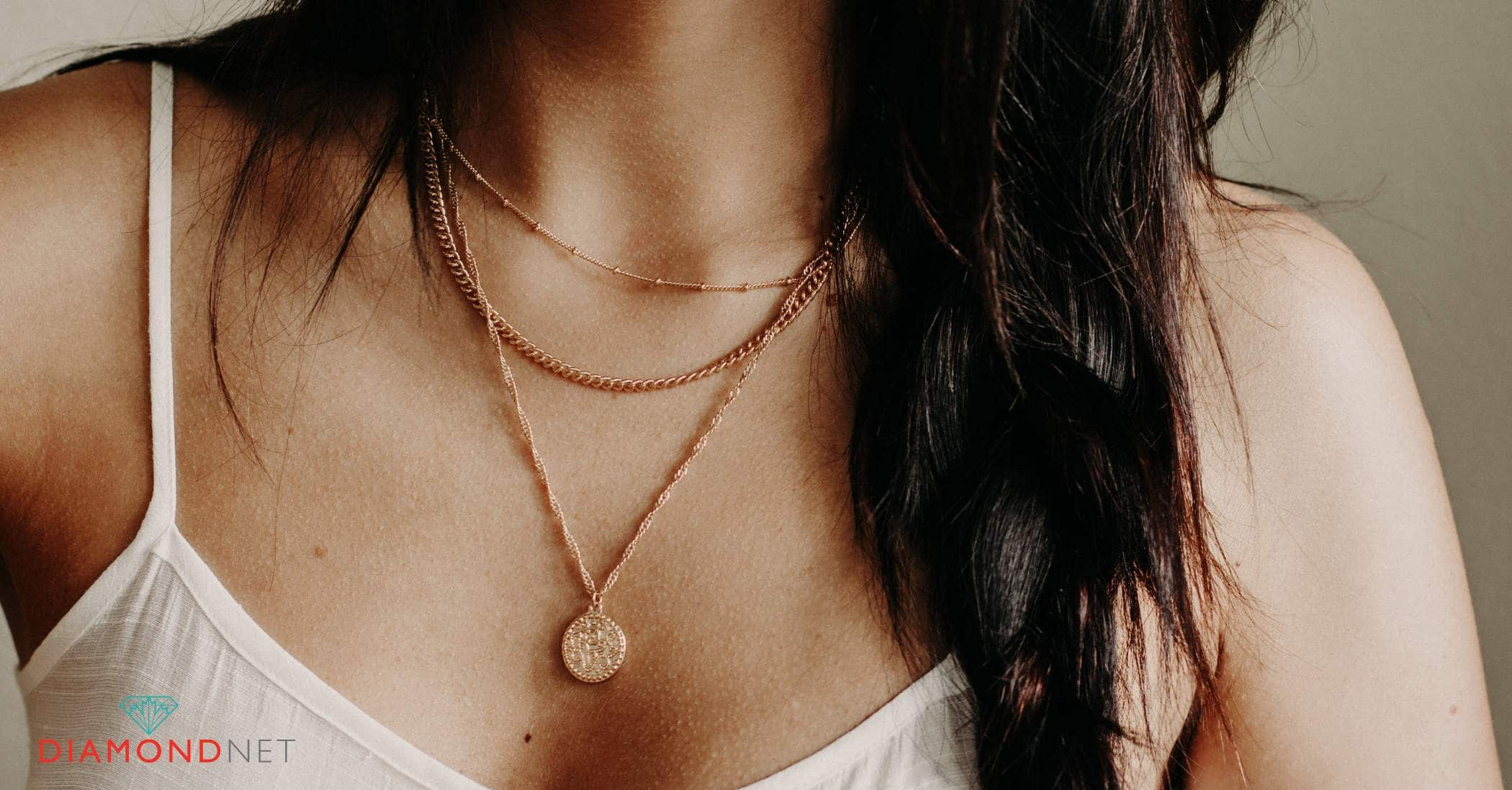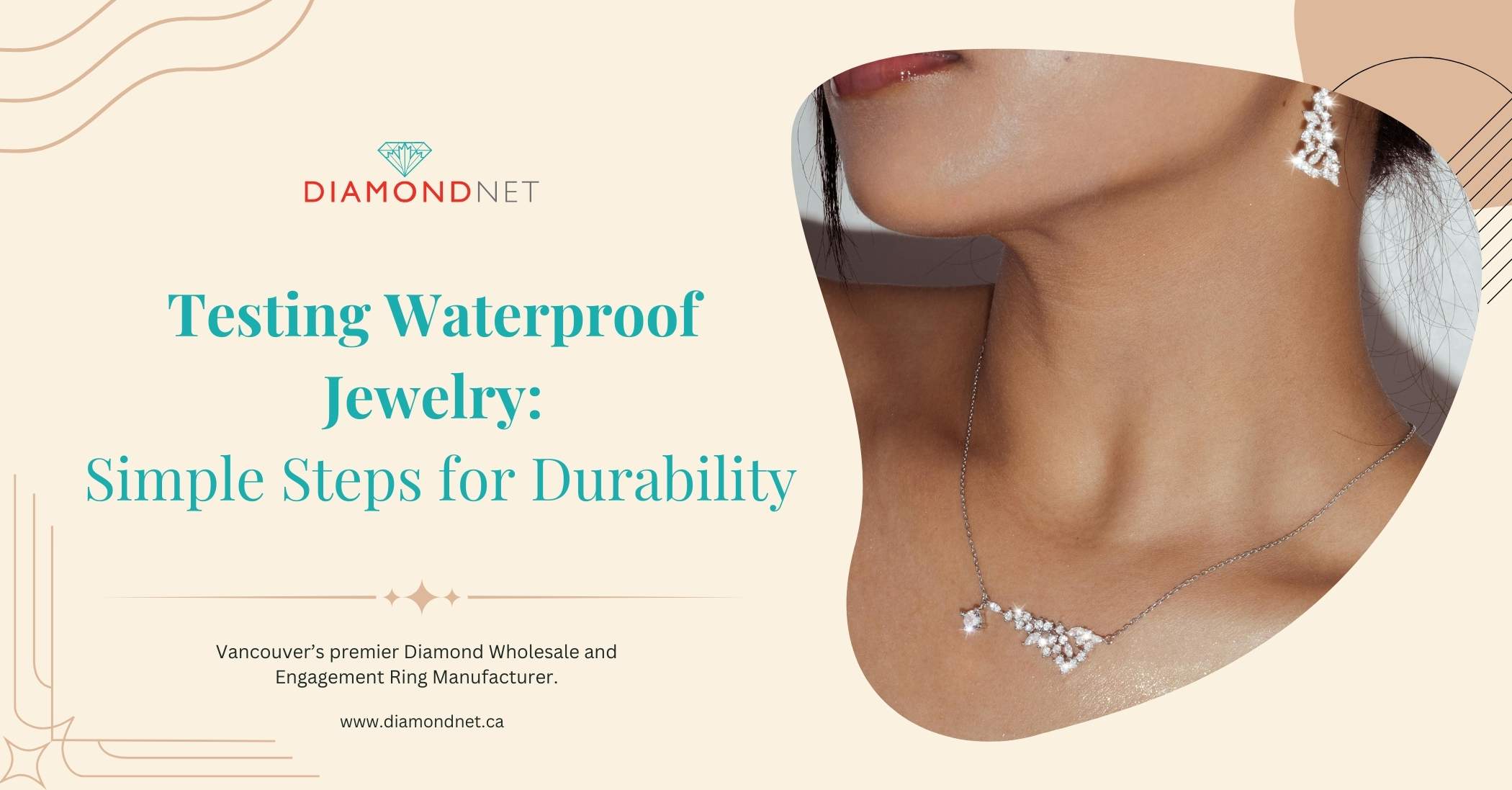In today’s fast-paced world, jewellery should do more than just look beautiful—it needs to withstand daily wear and exposure to moisture. Waterproof jewellery is crafted for durability, making it perfect for those who lead active lifestyles, whether swimming, exercising, or frequently washing their hands.
Unlike traditional jewellery that may tarnish or lose its shine over time, waterproof jewellery retains its brilliance and integrity even with regular water exposure. But what truly makes jewellery waterproof? And how can you test its water resistance?
This guide explores key materials, testing methods, and expert tips to help you choose long-lasting jewellery that suits your lifestyle.
Understanding Waterproof Jewellery: Materials & Key Differences
Not all jewellery is designed to handle water exposure. Waterproof jewellery is crafted to resist full water penetration, maintaining its quality and appearance even with continuous moisture exposure.
In contrast, water-resistant jewellery can handle occasional splashes but may degrade over time with frequent water contact.
Key Differences Between Waterproof & Water-Resistant Jewellery
While the terms “waterproof” and “water-resistant” are often used interchangeably, they differ significantly:
Waterproof Jewellery
- Can withstand full immersion in water for long periods without damage.
- Made from durable materials like stainless steel, titanium, platinum, and specific gold alloys.
- Often features protective coatings like PVD or e-coating to prevent corrosion and tarnish.
Water-Resistant Jewellery
- Handles light moisture exposure (e.g., handwashing, rain) but not prolonged submersion.
- Typically less durable for swimming or showering.
- Requires additional care to maintain its appearance and structure.
What materials are used in waterproof jewellery?
The durability and water resistance of jewellery depend on the materials used. High-quality waterproof jewellery is crafted from corrosion-resistant metals and enhanced with protective coatings to withstand moisture exposure.
Here’s a look at the best materials for waterproof jewellery and how they prevent tarnishing or damage.

Stainless Steel
One of the most popular choices for waterproof jewellery, stainless steel is known for its strength, durability, and sleek modern look. It withstands harsh conditions, making it ideal for active individuals who swim, exercise, or frequently wash their hands.
✔ Naturally corrosion-resistant, preventing rust and tarnish.
✔ Maintains its shine with minimal maintenance.
✔ Commonly used in bracelets, rings, and necklaces.
Titanium
Titanium is lighter than stainless steel but equally durable. It is highly resistant to oxidation and rust, even after prolonged water exposure.
✔ Ultra-lightweight and comfortable for everyday wear.
✔ Perfect for active lifestyles due to its strength and scratch resistance.
✔ A top choice for rings, watches, and statement jewellery.
Platinum
Platinum is one of the most durable precious metals, making it perfect for long-term wear in water-exposed environments.
✔ Naturally resistant to tarnish and corrosion—no coatings needed.
✔ Retains its luxurious, bright finish over time.
✔ Ideal for engagement rings, wedding bands, and fine jewellery.
Gold Alloys
While pure gold is too soft and prone to damage, 14k and 18k gold alloys are mixed with copper, silver, and zinc to enhance durability.
✔ Water-resistant with the right alloy composition.
✔ Can be coated for additional protection against tarnish.
✔ Best for daily wear jewellery with proper care.
Protective Coatings for Enhanced Water Resistance
Even the most durable metals can benefit from additional protection. PVD and e-coating create a water-resistant shield that prevents tarnish and corrosion.
✔ PVD Coating (Physical Vapor Deposition) → Bonds a thin, protective layer to the jewellery, making it scratch-resistant, waterproof, and fade-proof.
✔ E-Coating (Electroplating) → Uses an electric current to apply a moisture-resistant coating, commonly used on gold and silver jewellery.
How to Test Waterproof Jewellery: Methods for Ensuring Water Resistance
Even jewellery made from water-resistant materials may not be fully waterproof. To ensure your pieces can handle regular water exposure, it’s important to test their water resistance using simple at-home checks or professional evaluation methods.

How can I tell if my jewellery is waterproof?
Start with these straightforward tests to determine if your jewellery can withstand everyday moisture without tarnishing, fading, or corroding.
1. Visual & Manufacturer Inspection
✔ Check for Water-Resistant Materials → Look for stainless steel, titanium, platinum, or gold alloys, as these metals naturally resist tarnishing.
✔ Look for Stamps or Labels → Some jewellery has markings indicating water resistance—check inside bands or clasps.
✔ Verify Manufacturer’s Specifications → Trusted jewellers list waterproof ratings and care guidelines—always confirm before submerging jewellery.
2. Spray Test (At-Home Method)
✔ Step 1: Spray water lightly on the jewellery.
✔ Step 2: Wipe with a dry cloth and check for water spots or tarnish.
✔ Step 3: If no change occurs, the piece is water-resistant.
3. Salt Spray Test (Professional Testing)
✔ Step 1: Expose jewellery to a fine mist of saltwater.
✔ Step 2: Let it sit for 10-24 hours in a controlled environment.
✔ Step 3: Inspect for discoloration or corrosion—pieces that pass remain untarnished.
How do I care for waterproof jewellery?
Maintaining waterproof jewellery is simple, but proper care ensures long-term durability. Follow these best practices to keep your pieces in top condition.
Regular Cleaning
Even waterproof jewellery can accumulate dirt, sweat, and oils over time. To keep it looking its best:
✔ Wipe regularly with a soft cloth to remove buildup.
✔ For deeper cleaning, use lukewarm water and mild soap, gently scrubbing with a soft-bristled toothbrush.
✔ Dry thoroughly to prevent moisture buildup.
Drying After Water Exposure
✔ Always pat dry after swimming or showering, especially after exposure to saltwater, which can cause corrosion over time.
✔ Let jewellery air dry in a cool place to avoid trapped moisture.
Proper Storage
✔ Store pieces in a jewellery box or pouch to prevent scratches.
✔ Avoid storing different metals together, as abrasion can affect the finish.

Common Pitfalls to Avoid, Even with Waterproof Jewellery
Waterproof jewellery resists moisture, but improper care can still cause damage. Avoid these common mistakes to preserve its durability:
1. Exposure to Harsh Chemicals
Chlorine, bleach, and household cleaners can strip protective coatings (PVD, e-coating), leading to discoloration and corrosion. Always remove jewellery before swimming in pools or using cleaning agents.
2. Prolonged Water Immersion
Long-term exposure to hot tubs, saltwater, or diving conditions can weaken materials and accelerate tarnishing, even in waterproof metals. Rinse and dry jewellery immediately if exposed.
3. Improper Storage
Storing jewellery loosely with other metals can cause scratches and wear. Keep pieces in a soft pouch or jewellery box to maintain their finish.
Conclusion
Waterproof jewellery offers the perfect blend of durability and style, making it ideal for those with active lifestyles. With the right materials and protective coatings, your jewellery can withstand moisture while maintaining its beauty for years.
To keep your pieces in top condition, proper care and occasional professional assessments are key. At DiamondNet, our expert jewellers provide personalized guidance on selecting waterproof jewellery and professional assessments to ensure your pieces are truly water-resistant.
Book a consultation with DiamondNet today and let us help you maintain beautiful, long-lasting jewellery designed for your lifestyle!



